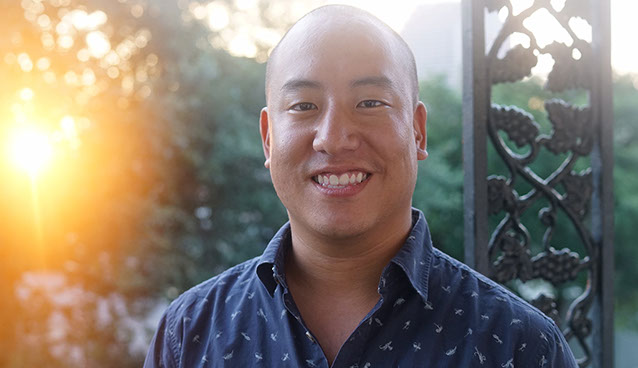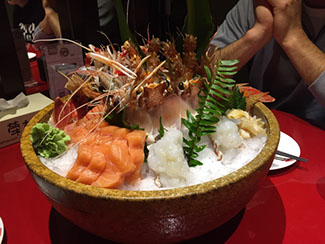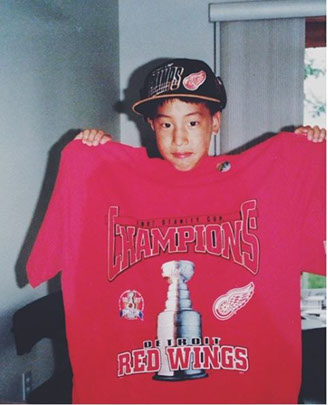
Tom O'Connor, Senior Designer at PDT, Has Recently Been Selected as a Jury Captain for Commercial Equipment Category of the Prestigious Core 77 Design Awards! Tom Is a Photographer, Hockey Player, Red Wings Fan, Scuba Diver, Outdoor Enthusiast and an Essential Part of the PDT Design Team!
Tom O'Connor
PDT Center Stage Series:
What is your favorite product that you ever designed?
Moji Curve, a unique muscle massager for large muscle groups. Moji is a longtime partner of PDT, and I really align with their offerings both as a designer and a user. Moji strives to deliver the best recovery products on the market, specifically focusing on the needs of athletes, which has long been a market flooded by poorly designed orthopedic products. Moji Curve is a forward-thinking solution that actually delivers on functionality as well as aesthetics, so it’s become very popular in that market place.
Nothing really shocking that I didn’t read about before I left, but a lot of little things that are really different than living in the Midwest. Floor toilets, restaurant/server etiquette, the crazy street food, cigarette smoking anywhere and everywhere, and even fake alcohol.
You recently spent 3 months on a work visa in Shanghai; could you tell us more about your experience there? What was day to day life like?
Above: Photo of Shanghai by Tom O'Connor
Did you have a big culture shock moment?
What were major cultural differences in design and packaging?

Shanghai is just insanely huge – there are 25 million people there! Everything moves really fast – from the awesome nightlife to the amazing restaurants and the stores that reflect its international population.

China’s economy has been built off of a world-leading manufacturing sector. Historically, I think the world’s perception is that China just manufactures western brands, while Chinese-designed products are of low-quality or knockoffs. This is rapidly changing as more Chinese brands are forming a much closer relationship with their consumers and beginning to adopt “American” industrial design and user centered design methodologies. Craftsmanship, quality and premium features that may have seemed excessive or overlooked are now being addressed, making some Chinese brands emerge just as competitive as any other brand in the world. You may or may not have heard of Huawei smartphones – but they’re a Chinese brand, currently the world’s #3 smartphone brand behind Apple and Samsung. Chinese brands are taking advantage of their extremely close manufacturing partnerships and are able to innovate and respond to market demands quicker than American brands. We’re seeing Chinese companies making big investments in American companies and design firms – GE Appliance and fuseproject are now Chinese owned.
Above: Fresh Assortment of Fish in Shanghai
I can’t name a specific dish, but in general, the abundance of fresh seafood. Everything was caught within the last 24 hours and was really cheap. You can purchase a spread of all kinds of seafood for $10-$20 USD.
What was your favorite food you tried?
Besides design, what other hobbies do you have?
Learn as many mediums as you can to communicate your idea, whether it's through animation, video editing or UI/UX prototyping.
As a recent selection as a juror of the prestigious Core77 design awards, what advice would you give to recent graduates looking to start a career in design?
Tom O'Connor
I try to take as many scuba diving trips with my family as I can – we usually go to Cozumel, St. Thomas or other spots in the Caribbean. I am originally from Michigan, so of course I play hockey. I love attending live music festivals such as Mamby on the Beach and Pitchfork. I live in Chicago and love spending time outside in the city in the summer – on the lake, biking, eating outside. I also recently bought a new Sony A6300 camera and have been enjoying shooting friends, architecture and landscapes.
Don’t limit your skillset to what you are taught at your university. Learn as many mediums as you can to communicate your ideas, whether it’s through animation, video editing or UI/UX prototyping. Get off of the computer and test your ideas through physical mock ups. Show a breadth of work in your portfolio by designing diverse products for radically different markets and industries. Be able to tell a verbal and visual story and show your failures and refinements that you encounter on the way to solving a problem.


Above: Tom Supporting the Detroit Red Wings
Right: Scuba Diving in Cozumel, Mexico
What were some projects you worked on in college?
My Junior and Senior studio courses at College For Creative Studies in Detroit were sponsored by real world brands. We worked hand-in-hand with designers for these companies to create forward-thinking products.
One semester, KitchenAid Appliances challenged us to create a new cooking appliance currently not offered in their product line. Wanting to introduce a new style of cooking into their current family of products, I designed a Sous Vide machine.
Another semester, I collaborated with Nike “Air Jordan” designers to create a new shoe specifically designed for college basketball athletes. This was my first introduction to creating soft-good products. We went to a local college and interviewed athletes about what they were looking for in a shoe. This design research proved interesting and necessary for this product, as differences in desires based on position were uncovered; for example, point guards were looking for different types of shoes than centers. We worked in teams with graphic design and photography students, which really helped us craft the design story throughout the semester.
Paired with internships that I had completed, I was provided a lot of actual real life work experience before entering my first professional role.
